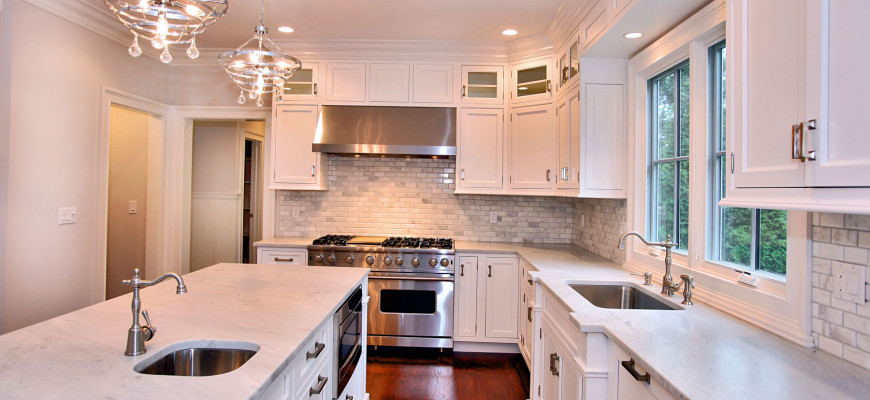
Lighting is one of the most important design elements in the home, and it is even more so in the kitchen. Almost an entirely unique discipline in itself, kitchen lighting requires equal consideration for style and functionality. Executed properly, lighting can make your kitchen attractive and appealing to work in. Conversely, poorly-planned lighting can make working in the kitchen a chore, and it can detract from what would otherwise be a great design,
In most cases, proper lighting of a kitchen will require more than a single light source. For maximum flexibility, illumination, and aesthetic appeal, it will often be necessary to implement two or more distinct lighting sources, each with its own specific purpose. Some factors to take into consideration are the tasks to be performed, the area to be accentuated, and the decorative and ambient functions of the lighting fixtures.
You will obviously want sufficient lighting to carry out day-to-day tasks, but don’t forget to plan for lights that will allow you to see into your cabinets as well. You should also make sure that the kitchen lighting you install will work equally well for daytime and nighttime use.
For purposes of accenting certain areas of your kitchen, you will have to give careful thought to the type of lights you will install. Depending on your design taste and personal preferences, you might find that standard overhead lighting fixtures are sufficient, or you might have a need for recessed or track lighting.
You generally have a lot more room for creativity when planning kitchen lighting for decorative purposes. Let your taste be your guide, but try to exercise some restraint as well. Although lighting can make a drab kitchen more impressive, it is fairly easy to go overboard and have a harshly-lit and garish-looking kitchen. In most cases, a little goes a long way, provided you have sufficient lighting for all your typical kitchen tasks.